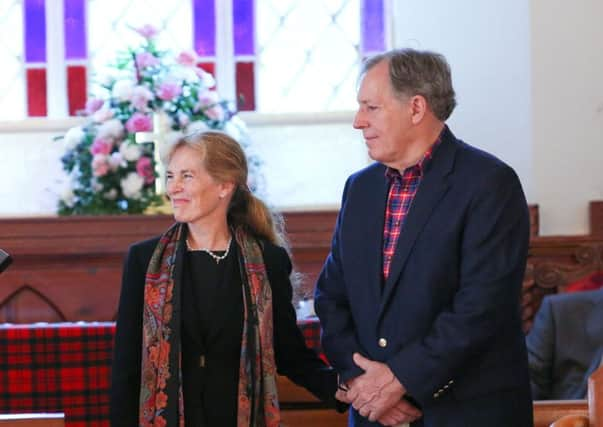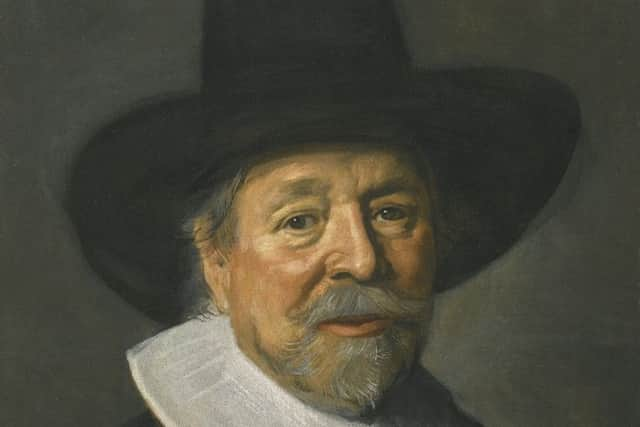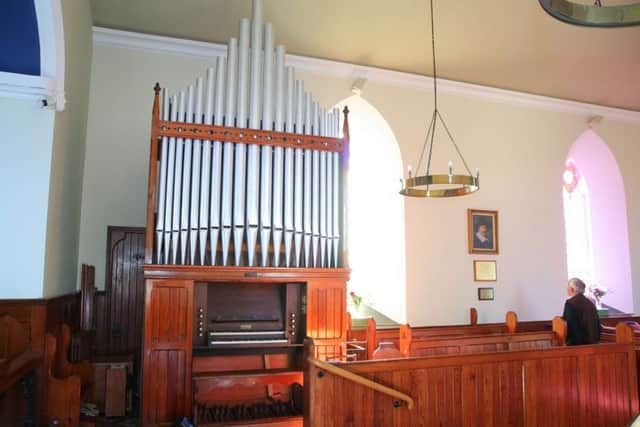After 13 generations, American duo return to Co Down ancestral home '“ with a gift


Henry and Susan Livingston came from New York state to Killinchy to trace the footsteps of their ancestor Rev John Livingston – a Scottish-born Presbyterian minister who was one of the early Plantation settlers, and who established the village’s parish church.
In honour of their connection to the area – with Henry being John Livingston’s 11th great grandchild – the Americans gave the church a fully-restored pipe organ dating back to 1899.
Advertisement
Hide AdAdvertisement
Hide AdThe life of ancestor John Livingston was remarkable, and included an abortive effort to take about 140 would-be colonists from Ulster to America (see sidebar) – believed to be the first such attempted sailing from the Province.


He became rector of newly-created Killinchy Parish Church – the first Protestant congregation in the village – while in his late 20s in 1630.
The current rector of the church, Stanley Gamble, said nothing like today’s plethora of Protestant denominations existed in John Livingston’s time; instead it was essentially just the reformed faith, or the Roman one. Over time the parish church became Presbyterian, and then later Church of Ireland as it is today.
The current church was built in 1830, but on the same site of John Livingston’s original one.
Advertisement
Hide AdAdvertisement
Hide AdRev Gamble said the US visitors, who both worked in Brown Brothers Harriman Bank (though Henry is now retired) had travelled to Northern Ireland last year on a kind of pilgrimage to John Livingston’s former home.


“They discovered the parish church, and me, and made the offer of installing the organ in his memory,” he said.
The instrument was recovered from a defunct Methodist church in northern England.
Originally made by Harrison & Harrison, and restored by the Pipe Organ Preservation Company, their gift (thought to be worth five-figures) was formally presented at a gathering on September 29.
Advertisement
Hide AdAdvertisement
Hide Ad“We had a little house organ – but it wasn’t much cop,” Rev Gamble said. “Harrison & Harrison is like the Rolls-Royce of organs.”
The Americans’ visit was marked by the first-ever Livingston Days festival (on September 29 and 30, which featured a choral concert, piping sessions, dancing, and more), and Rev Gamble said he aims to keep it going as a regular thing in the parish.
“We’re eternally grateful to Susan and Henry Livingston for their generosity. They’ve opened a new chapter of cultural and musical life in this parish,” said Rev Gamble.
In terms of how John Livingston had ended up in Killinchy in the first place, Queen’s University Belfast professor Laurence Kirkpatrick said he was one of a wave of unemployed ministers dispatched by King James I to Ireland to the Plantation.
Advertisement
Hide AdAdvertisement
Hide AdBut as a result of theological ructions he was “temporarily suspended, reinstated, suspended again and finally deposed in November 1635”.
“These clerics, originally drafted into Ulster as part of Government policy, were now persecuted as part of a changing Government policy,” he said. Whilst his own plan to emigrate ultimately failed, his children moved to Massachusetts, where grandson Johannes Livingston married Mary Winthrop – beginning the line of descendents including Henry and Susan.
John Livingston’s bid to emigrate was not plain sailing.
The ship, Eaglewing, left Groomsport on September 9, 1636, but Prof Kirkpatrick said: “Severe Atlantic storms damaged the ship and the group decided God was telling them to return to Ireland.
“They arrived back in Ulster on November 3.
“A baby boy was born during the voyage to a couple from the Killinchy congregation and Livingston baptized him the following Sunday, naming him ‘Seaborn’.”
John Livingston himself died in 1672 in Amsterdam, about a decade after Charles II had exiled him over a theological dispute.